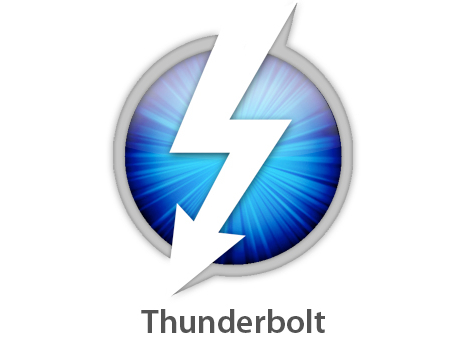Intel's 50Gbps Thunderbolt Successor by 2015
Intel is reportedly working on a new interconnect technology capable of pushing data between computers five times faster than its just-launched Thunderbolt technology. Slated to arrive in 2015, it will be based on silicon photonics which combines silicon components and optical networking.
Wednesday during a press event in New York, Jeff Demain, strategy director of circuits and system research at Intel Labs, said the new tech will provide speeds of up to 50 gigabits per second over distances of up to 100 meters, whether it's a connection between PCs or between external drives, smartphones and tablets.
He also indicated that the new tech will also cost less to build because the components will be created using existing silicon manufacturing techniques. "We have to use the silicon manufacturing technologies we know," Demain said. "That's what the promise of the technology is. It is based on a silicon foundation."
Furthermore, Intel expects the new tech to help propel the successors of 1080p into consumer living rooms. As it stands now, image resolutions are slated to quadruple by the middle of the year, requiring a larger pipeline to push the massive loads of video data from set-top boxes and other devices to HDTVs. 50 gigabits per second should handle that kind of virtual haul.
During the presentation, Demain showed mock-up cables that will supposedly carry the data. Based on the current design, these will actually be thinner than cables currently used for USB 3.0 and Thunderbolt. The new tech will also follow Thunderbolt's lead and support both DisplayPort and PCI-Express protocols as well as other unnamed protocols.
After showcasing the cables, Demain also revealed working prototypes of the silicon chips that will be used to transmit and send the laser signals. These chips will eventually be merged together and reduced in size to fit within smartphones and tablets.
As Thunderbolt exists with USB, the new tech should exist side-by-side with Thunderbolt in some devices. "We see them as complementary. It's the evolution of these connectors and protocols as they move forward," Demain said. "Thunderbolt is more than a cable. It's a router chip that aggregates DisplayPort and PCI-Express."
Get Tom's Hardware's best news and in-depth reviews, straight to your inbox.

Kevin Parrish has over a decade of experience as a writer, editor, and product tester. His work focused on computer hardware, networking equipment, smartphones, tablets, gaming consoles, and other internet-connected devices. His work has appeared in Tom's Hardware, Tom's Guide, Maximum PC, Digital Trends, Android Authority, How-To Geek, Lifewire, and others.
-
woffle "Intel expects the new tech to help propel the successors of 1080p into consumer living rooms. As it stands now, image resolutions are slated to quadruple by the middle of the year"Reply
Which tv's are going to have a resolution of ~5800x3300 by mid of the year? -
dark_lord69 They are talking about short distances like in your home... That's all fine and dandy but ISP's can't go anywhere near that speed.Reply
My ISP Connection:
6 mbps
This Technology:
50,000 mbps
I guess I just fail to see the need for this technology.
OK, so you've got a new 4320p HDTV I don't think blue ray can do more than 1080p so a new player would need to be released and perhaps you could connect a PC or tablet to a computer for an insanely HD picture but as I said.. I fail to see a need for it and for TV's that are even HIGHER definition. I'm fine with my 1080p. -
Oh great, all those people who bought all the thunderbolt hardware are going to have to upgrade to this new technology or be left behind.Reply
Oh, wait... No one bought into the thunderbolt technology to begin with... -
cmartin011 i would want more performance out of my 40in tv 2X resolution 4X the native refresh rate infinite contrast .01ms response time for just 2D picture. so that would be 3840x2160 240 new frames a seconds and near instant response i do not know if that requires 50 gigabytes a second i doubt it lolReply -
burnley14 Replycombines silicon components and optical networking.
I'm guessing this is the "Light" that they intended the original Light Peak to have? -
wfs coming to a screen near you soon (ok - maybe 10+ years)Reply
http://it-chuiko.com/gadgets/6339-super-hd-bbc-provedet-s-londonskoj-olimpiady-2012.html
-
subasteve5800 I thought they already had this, then couldn't make it work so they swapped out the optics for copper and gave us Thunderbolt. I guess it saves R&D money if you can just continually announce the same technology.Reply -
mianmian At 2015, Intel rep:Reply
Well, we find it too expensive to make a 50Gbps fiber link. Here is our new product that bundles 5 thunderbolt cables... -
wfs even better info about Super Hi-DefReply
http://www.youtube.com/watch?v=b7GYbJtB1no&feature=related
